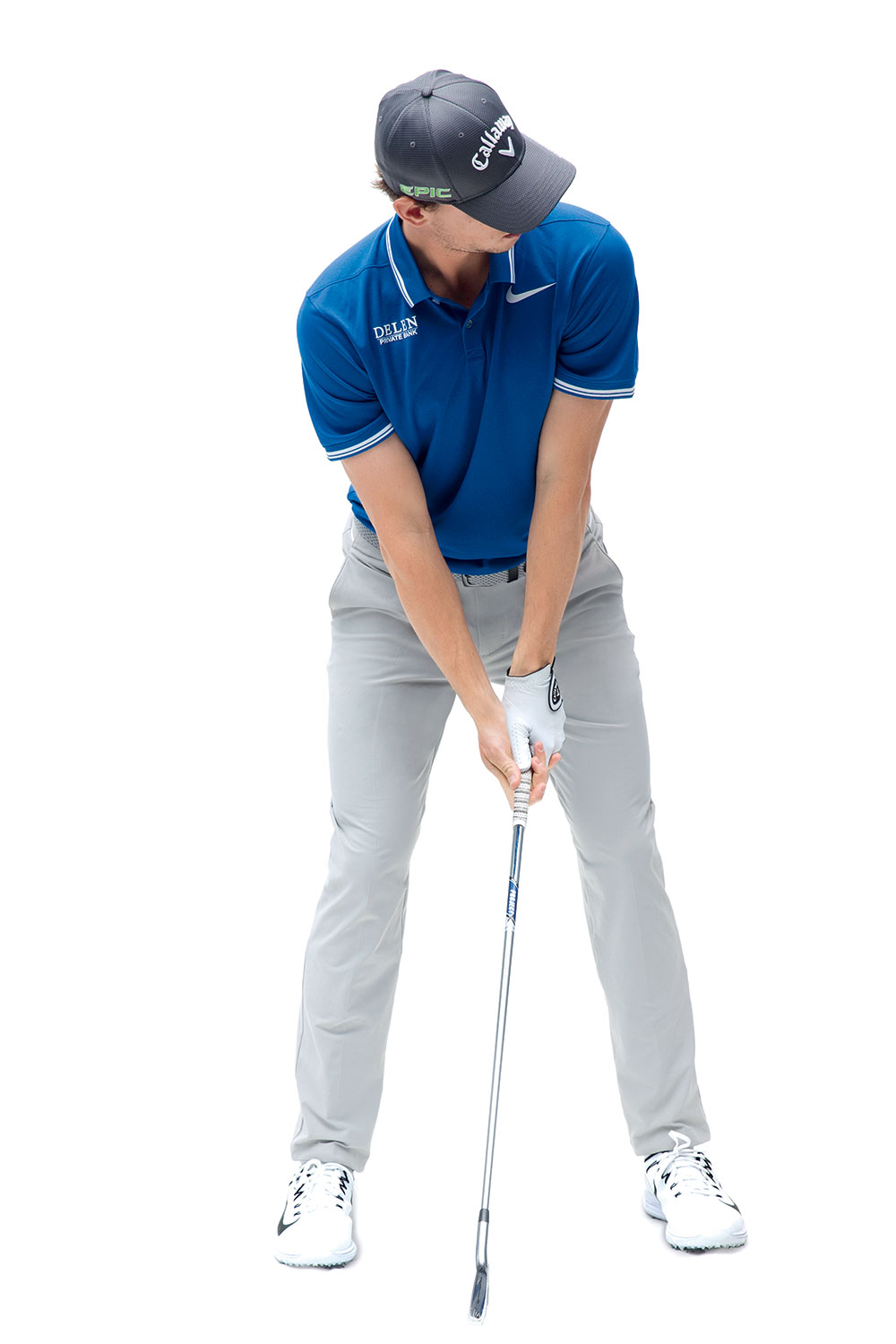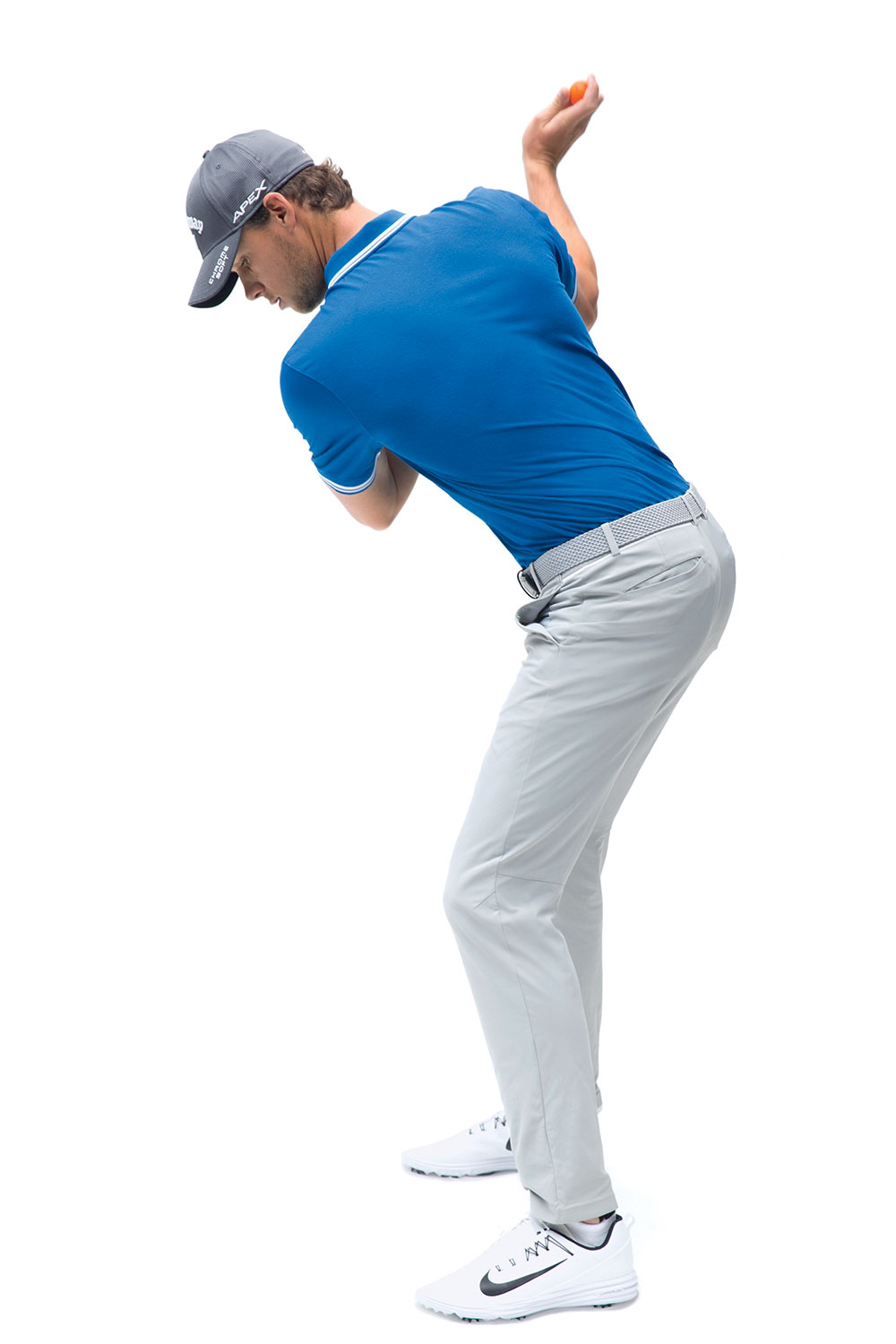Everyone wants to hit the ball farther. That’s easy to understand. Length makes it easier to score. But if you’re looking at pure clubhead speed as your indicator for how far – and how well – you’re hitting shots, you’re missing an important part of the story.
I’ve been lucky enough to have the same great coach since I was 13. That’s when Pete Cowen came to Belgium to run a program for up-and-coming junior players. Pete told me from the beginning the goal was to have a swing that would hold up under the most stressful situations; one that consistently put pressure on the ball and didn’t require lots of manipulation with the hands. So that’s what we practised.
I spent years learning how to create pressure with my shoulders, and then transmit it through my arms into the club and ball. The work’s been done. Now it’s about getting in contention and coming through in the clutch, and I’ve been able to do that a few times.
This idea of pressure is why people love watching Henrik Stenson hit iron shots so much. Henrik learned it from Pete as well, and he compresses the ball better than anybody.
When you do it correctly, you’ll transfer more of the energy you generate with your swing into distance – and accuracy. You’re hitting the ball flush, instead of with a glancing blow.
I’m 6-foot-5 with long arms, and I train to be flexible and strong. My clubhead speed with the driver, about 120 miles per hour, reflects that. But no matter how fast you swing, you can get better results by focusing more on pressure than speed. I’ll show you a couple of ways to do that.
– with Matthew Rudy
Axe Drill
Get In Sequence

 If you go on YouTube and type in “Pete Cowen drill”, you’ll find a bunch of videos where he’s demonstrating some version of the axe drill – which is one of my favourites. I do it almost every week on the range before an event, because it produces such a great feeling of unwinding in the right sequence and direction – key to putting pressure on the ball. To do it, flip the club around in your hands so the toe is pointing at the ground [above] and make some swings without a ball. If you were going to chop straight down on a log with an axe where the ball would be, you’d use your shoulders, arms and wrists in a specific, efficient way. Your swing should have the same motion, just turned to the side. With the club flipped, the change in location of weight will get you to feel it moving on the correct path down. In this drill, you want to get back to impact the way you started, with the toe down.
If you go on YouTube and type in “Pete Cowen drill”, you’ll find a bunch of videos where he’s demonstrating some version of the axe drill – which is one of my favourites. I do it almost every week on the range before an event, because it produces such a great feeling of unwinding in the right sequence and direction – key to putting pressure on the ball. To do it, flip the club around in your hands so the toe is pointing at the ground [above] and make some swings without a ball. If you were going to chop straight down on a log with an axe where the ball would be, you’d use your shoulders, arms and wrists in a specific, efficient way. Your swing should have the same motion, just turned to the side. With the club flipped, the change in location of weight will get you to feel it moving on the correct path down. In this drill, you want to get back to impact the way you started, with the toe down.
Ball-Toss Drill
Release Check

If you want to have a long conversation about golf instruction, say the word “release” to a teacher or tour pro and get out of the way. How the club should unhinge in the downswing gets taught a lot of different ways, but it’s more important to feel a good release than define it. I use a drill that gives me an immediate sense if I’m doing it right. I stand about 15 feet from a wall holding a tennis ball I bring to every event, but I’m using a foam golf ball here. While in golf posture, I hold the ball in my right hand and place my left arm across my chest [above]. Then I make a golf-swing motion over and over, throwing the ball down hard onto the same spot where my golf ball would be on the ground at address [below]. When it’s thrown right, the foam ball hits that spot, bounces off the wall and comes back to me. If it’s released too early or too late, the ball just goes sideways, and I have to chase it down. Try this drill. If you can consistently hit the spot when you throw a ball, you now have the feel for when to release the club in the downswing. That’s how you put pressure on the ball. And the more you do that, the more you can make it do what you want.

The Next Generation
Not many Aussie golf fans knew who Thomas Pieters was going into the 2016 Ryder Cup. That changed after the Belgian, who was partnered with Rory McIlroy, went 4-1, scoring the most points as a European rookie in history. “He gets on the biggest stage, and he’s not frightened at all,” says coach Pete Cowen, who has worked with many top European pros including Henrik Stenson and Lee Westwood. “You can’t say that about many players.” Pieters, 25, is comfortable in America, having played three years at Illinois where he won the 2012 individual NCAA title. But he has no plans to leave the European Tour, where he has won three times in his first three seasons. He’ll play a “global schedule”, Pieters says, and try to close on his first Major win. “He’ll go as far as he wants to go,” Cowen adds. “He’s the complete package.”



